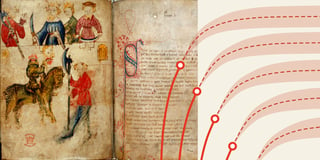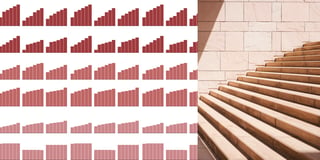The masked bandits come to Germany
Hi, it’s Rose! I write for Datawrapper’s blog, and today I'm using it to talk about raccoons.
I’ve always been a city mouse, and most of what I think I know about nature actually comes from books. I was fully an adult before I found out, for example, that hedgehogs don’t live in North America at all — they felt like a familiar animal, and so I’d just assumed that you would find them in “the countryside” (a vague place where children’s stories are set).
When a friend, who grew up in the hedgehog paradise of the United Kingdom, made fun of me for this recently, I tried to defend myself by saying that it was a natural kind of mistake, one she’d probably made before too. And as an example of a uniquely North American animal, I gave… the raccoon.
Now, if you’re a German reading this post, you may be thinking I was simply wrong. After all, a raccoon was rummaging through your garbage just last Friday! And indeed, a quick trip to Wikipedia proved that not only do raccoons live on several continents, but I’m living right in the middle of their European heartland.
Ok, so I was wrong? I would argue that I was more behind the times:
Raccoons are native to North America — their English name comes from an Algonquian root meaning “scrubs with its hands” — and until the 20th century they were nowhere to be found in Europe. As recently as 1995, it was rare to find a raccoon in a German hunter’s bag. (These statistics are a good proxy for the overall population, since raccoons in Germany are considered an unprotected game species and can be killed at any time of year without further permissions.) But now their numbers are exploding. In the past 25 years, hunting records would imply that the raccoon population of Germany has grown by a factor of 60.
It’s a classic picture of an invasive species. But how did they get here in the first place? There are two moments in history when we know for sure that raccoons were introduced into the wild in Germany. In 1934, two breeding pairs were deliberately released near lake Edersee, in the area of Kassel, to “enrich the local fauna.” And in 1945, 25 more escaped from a fur farm in Wolfshagen, Brandenburg.
It’s pretty wild that, 75–85 years later, you could easily identify both of those locations on this map just from the sheer number of raccoons that still live there. And you can clearly see how the animals have advanced from their starting points, spreading out farther and farther into the surrounding districts. (In fact, genetic studies indicate that there may have been as many as five other, more recent, introduction events — but those populations have had much less time to grow.)
I know this is not good news. Invasive species are a nuisance to people and can pose an ecological threat to native animals and plants. And yet there’s something so charming about raccoons, with their masked faces and the way they use their hands. I can’t quite bring myself to root against them as they continue their march across the continent.
That’s all from me for today! I’d love to hear your “trash panda” thoughts and experiences on Twitter (@rosemintzers) or by email (rose@datawrapper.de). Next week, you can look forward to a Weekly Chart from our developer Jakub.



